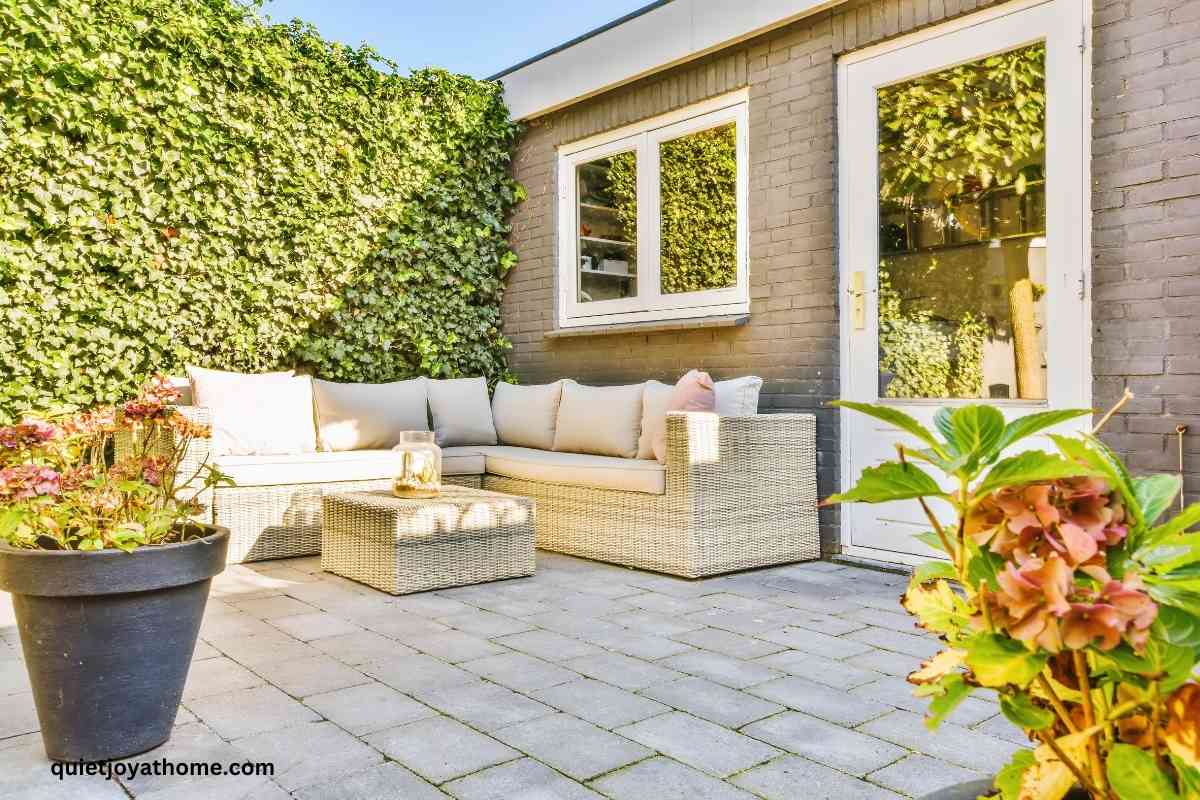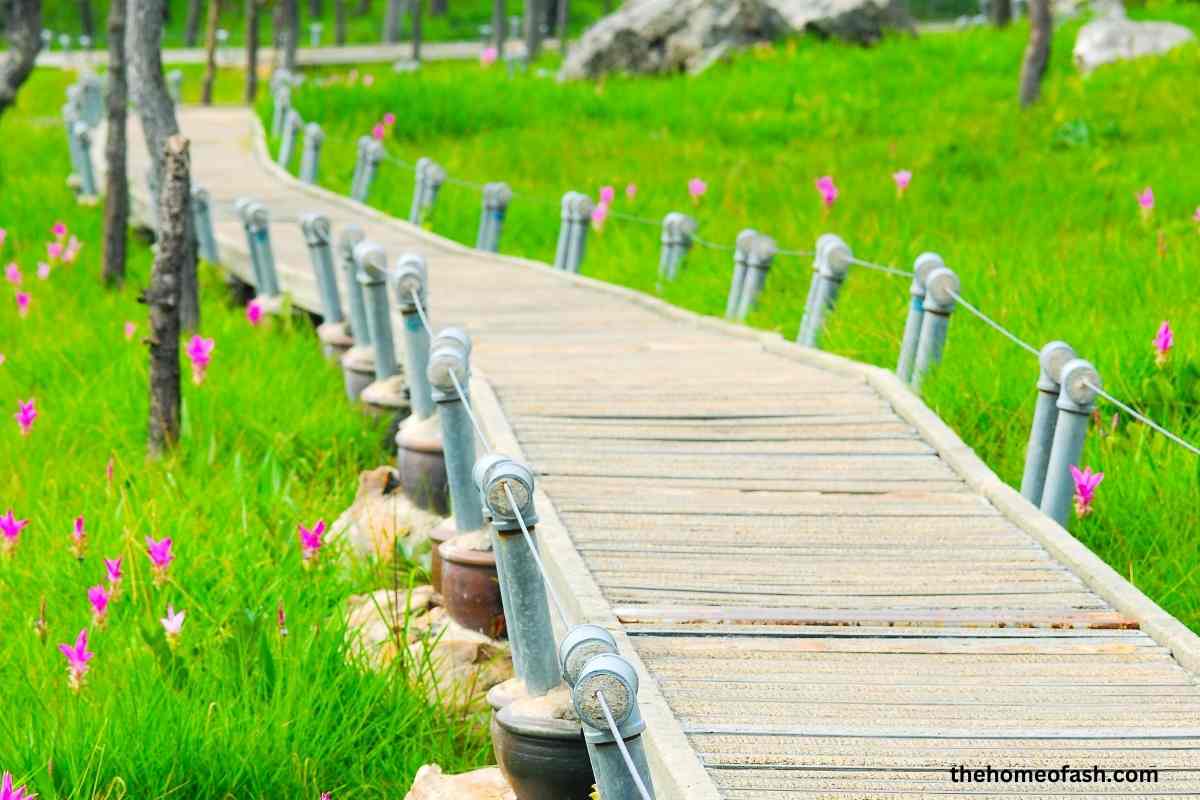I am excited to share with you some of my favorite ideas for greenhouses. Greenhouses are a fantastic way to grow plants, flowers, and vegetables year-round, regardless of the weather outside. Whether you are a seasoned gardener or just starting out, there are so many creative ways to design and use a greenhouse.

In this article, I will be sharing 22 different greenhouse ideas that are sure to inspire you. From small, compact designs to large, spacious structures, there is something for everyone. Whether you are looking to grow herbs on your windowsill or create a full-scale greenhouse in your backyard, these ideas will help you get started. So, let’s dive in and explore the wonderful world of greenhouses!
1) Vertical Garden
I absolutely love the idea of a vertical garden. It’s a great way to add some greenery to your home without taking up too much space. Plus, it’s a unique way to display your plants and make a statement in your decor. There are so many different ways to create a vertical garden, from using hanging planters to building a living wall. Whichever method you choose, a vertical garden is sure to bring some life and color to your space.
2) Aquaponic System
In my opinion, an aquaponic system is a fantastic way to grow plants and fish at the same time. It’s a sustainable and eco-friendly method that can save space and resources. The system works by using fish waste to fertilize the plants, while the plants filter the water for the fish. It’s a great way to produce fresh vegetables and fish in your own backyard. Plus, it’s a fun and educational project for the whole family to enjoy.
3) Solar-Powered Ventilation
I love the idea of using the sun’s energy to power my greenhouse and keep it well-ventilated. With solar-powered ventilation, I can regulate the temperature and humidity levels inside my greenhouse without relying on electricity from the grid. By installing solar panels on the roof and using a solar-powered fan, I can create a sustainable and eco-friendly environment for my plants to thrive. Plus, it’s a cost-effective solution that can save me money in the long run.
4) Rainwater Harvesting System
As a green enthusiast, I always try to find ways to reduce my water consumption. One of the best ways I’ve found is by installing a rainwater harvesting system. It’s a simple and effective way to collect and store rainwater for later use. The system consists of a collection tank, gutters, and pipes that transport the water to the tank. This water can be used for gardening, watering plants, or even flushing toilets. Plus, it’s a great way to reduce your water bill and help the environment.
5) Compost Bin

I believe that composting is an essential part of any greenhouse. It’s a great way to turn kitchen scraps and yard waste into nutrient-rich soil that can be used to nourish plants. A compost bin can be easily set up in a corner of the greenhouse, and it doesn’t take up much space. There are many different types of compost bins available, from simple DIY designs to more elaborate commercial models. I prefer a simple, homemade bin made from recycled materials. It’s easy to use and helps reduce waste while improving soil quality.
6) LED Grow Lights

LED grow lights are a great option for indoor gardening. They are energy-efficient and provide the right spectrum of light for plants to grow. I use LED grow lights in my greenhouse and have seen great results. They are also long-lasting and don’t produce as much heat as traditional grow lights. LED grow lights come in different sizes and colors, so it’s important to choose the right one for your plants. Overall, LED grow lights are a great investment for any indoor gardener.
7) Automatic Watering System
As someone who loves gardening, I know how important it is to keep plants hydrated. That’s why I highly recommend installing an automatic watering system in your greenhouse. It’s convenient and ensures your plants get the right amount of water they need, without any guesswork.
These systems can be customized to fit your specific needs and can be controlled from your smartphone or computer. Plus, they can save you time and money in the long run by reducing water waste and preventing overwatering. Trust me, investing in an automatic watering system is worth it.
8) Hydroponic Tower
As I was researching greenhouse ideas, I came across the concept of a hydroponic tower. This is a vertical system that allows you to grow plants without soil, using nutrient-rich water instead. The tower can be made from PVC pipes or other materials and can be customized to fit your space and needs. This system is perfect for those who want to grow fresh produce in a small space or in an urban environment. With a hydroponic tower, you can enjoy fresh herbs and vegetables all year round.
9) Greenhouse Heater
As the temperature drops, I know I can rely on my greenhouse heater to keep my plants warm and healthy. There are many types of heaters available, but I prefer the electric ones since they are easy to use and maintain. I also make sure to choose a heater with a thermostat, so I can set the temperature to the ideal level for my plants. With a good greenhouse heater, I can extend my growing season and enjoy fresh produce all year round.
10) Insulated Panels
I love using insulated panels in my greenhouse projects. They are easy to install and provide excellent insulation, keeping the temperature consistent and reducing energy costs. Insulated panels come in a variety of materials, such as polycarbonate and fiberglass, and can be customized to fit any greenhouse design. They also offer great light transmission, ensuring your plants get all the sunlight they need. Overall, insulated panels are a fantastic option for any greenhouse builder looking for a cost-effective and energy-efficient solution.
11) Shade Cloth

As a greenhouse owner, I understand the importance of providing proper shade for my plants. That’s why I use shade cloth to protect them from excessive heat and sunlight. Shade cloth comes in different densities, and I choose the one that suits my plants’ needs. It’s easy to install and can be removed when not needed. With shade cloth, my plants thrive in a comfortable environment, and I have peace of mind knowing they’re protected.
12) Roll-Up Sidewalls
I absolutely love the idea of roll-up sidewalls for greenhouses. They are a great way to regulate temperature and provide ventilation. With roll-up sidewalls, you can easily adjust the airflow and temperature inside your greenhouse. Plus, they allow for easy access and make it simple to move plants in and out. I highly recommend considering roll-up sidewalls for your greenhouse if you want a versatile and functional setup.
13) Misting System
A misting system is an excellent way to keep your greenhouse cool during the hot summer months. I have found that it is especially useful for plants that require high humidity levels. The system works by spraying a fine mist of water into the air, which then evaporates and cools the surrounding area.
One thing to keep in mind is that the misting system should be set up in a way that it does not soak the plants. You want to maintain the right humidity level without causing any damage to your plants. Overall, a misting system is a great addition to any greenhouse, and it is relatively easy to install.
14) Greenhouse Benches
I find greenhouse benches to be a great addition to any greenhouse. They provide a sturdy surface to place your plants on, making it easier to water and care for them. Plus, they keep your plants off the ground, which can prevent soil-borne diseases.
When choosing greenhouse benches, make sure they are made of durable materials that can withstand moisture and humidity. I recommend opting for benches with adjustable legs, so you can customize the height to your needs. With the right greenhouse benches, you can create a functional and organized growing space.
15) Soil Thermometer

As a greenhouse owner, I know the importance of maintaining the right temperature for my plants. That’s why I always keep a soil thermometer handy. It helps me monitor the temperature of the soil, which is crucial for the health and growth of my plants. By using a soil thermometer, I can adjust the temperature accordingly and ensure that my plants are thriving. It’s a simple and affordable tool that every greenhouse owner should have in their kit.
16) Hygrometer
As a plant enthusiast, I know how important it is to maintain the right humidity levels in a greenhouse. That’s why I always keep a hygrometer handy. It helps me monitor the moisture content in the air and adjust it accordingly. With this simple device, I can prevent mold growth, promote healthy plant growth, and ensure my greenhouse environment is optimal. A hygrometer is a must-have tool for any serious greenhouse gardener.
17) Plant Trellis

I love using plant trellises in my greenhouse! They are perfect for supporting climbing plants like tomatoes, cucumbers, and beans. Plus, they help to maximize vertical space and keep plants off the ground, which can reduce the risk of pests and diseases. There are many different types of trellises to choose from, including bamboo, metal, and wooden options. Personally, I prefer using metal trellises as they are durable and easy to clean. Overall, plant trellises are a great addition to any greenhouse setup.
18) Greenhouse Shelving
I love using greenhouse shelving to maximize the space in my greenhouse. It’s a great way to keep my plants organized and off the ground, which helps with air circulation and pest control. I use a mix of wire and wooden shelving, depending on the size and weight of the plants. I also like to use hanging baskets to create more vertical space. Overall, greenhouse shelving has been a game-changer for me and I highly recommend it to any greenhouse gardener.
19) Seedling Heat Mat
As a gardener, I know that getting seeds to germinate can be a challenge. That’s why I love using a seedling heat mat. It provides a consistent level of warmth to the soil, which encourages seed germination. Plus, it’s a great way to extend the growing season for plants that need warmer soil temperatures to thrive. With a seedling heat mat, I can start my garden earlier in the season and enjoy a longer harvest.
20) Evaporative Cooler
If you’re looking for a budget-friendly way to cool your greenhouse, an evaporative cooler might be just what you need. As the name suggests, it works by evaporating water to cool the air. I’ve found that it’s particularly effective in dry climates, where the air is hot but not very humid. Just be aware that it will increase the humidity inside your greenhouse, which could be a problem if you’re growing plants that don’t like too much moisture.
21) Greenhouse Fans

I highly recommend investing in greenhouse fans to maintain a healthy and productive growing environment. These fans help to circulate air, prevent stagnant air pockets, and regulate temperature and humidity levels. There are many options available, including ceiling fans, wall-mounted fans, and portable fans. I personally prefer wall-mounted fans as they are easy to install and can be adjusted to direct airflow where it’s needed most. Remember to clean your fans regularly to prevent dust buildup and ensure optimal performance.
22) Row Covers

Row covers are a simple and effective way to protect your plants from pests and harsh weather conditions. I like to use floating row covers made of lightweight fabric that allows sunlight and water to pass through. They are easy to install and can be used throughout the growing season. Row covers can also help extend your growing season by providing a few degrees of frost protection. Just be sure to remove them once the weather warms up to prevent overheating and promote proper air circulation.
Benefits of Greenhouses

Extended Growing Seasons
As a greenhouse owner, I can attest to the fact that greenhouses offer extended growing seasons. With a greenhouse, I can start my plants earlier in the year and continue growing them later into the fall season. This means that I can enjoy fresh produce for a longer period of time, and I don’t have to worry about my plants being damaged by frost or other harsh weather conditions.
Controlled Environment
Another benefit of greenhouses is the ability to create a controlled environment for your plants. With a greenhouse, I can control the temperature, humidity, and light levels, which means that I can create the perfect growing conditions for my plants. This is especially important if you live in an area with extreme weather conditions, as it allows you to protect your plants from the elements.
In addition, greenhouses also protect your plants from pests and diseases, which means that you don’t have to use harmful pesticides or other chemicals. This is not only better for the environment but also for your health and the health of your family.
Overall, greenhouses offer many benefits for both the environment and the gardener. With extended growing seasons and a controlled environment, you can enjoy fresh produce all year round while also protecting your plants and the environment.
Greenhouse Construction Basics

Choosing the Right Location
When building a greenhouse, the first step is to choose the right location. The ideal location would be a flat area with plenty of sunlight, good drainage, and protection from harsh winds. I personally chose a spot in my backyard that gets full sun exposure, is far enough from trees to avoid falling debris, and is not in the way of any foot traffic.
It’s also important to consider the orientation of the greenhouse. I made sure that the longest side of the greenhouse faced south to maximize the amount of sunlight it receives.
Materials and Structures
The materials and structure used in building a greenhouse are crucial in ensuring its durability and functionality. I opted for a wooden frame with polycarbonate panels for the walls and roof. The wood was treated to prevent rotting and the polycarbonate panels were chosen for their durability and ability to diffuse sunlight.
Other popular materials for greenhouse construction include aluminum frames, glass panels, and polyethylene plastic film. Each material has its own advantages and disadvantages, so it’s important to choose one that fits your specific needs and budget.
In terms of structure, the greenhouse should be sturdy enough to withstand harsh weather conditions such as strong winds and heavy snow. I made sure to anchor the greenhouse securely to the ground and used cross-bracing to reinforce the frame.
Overall, choosing the right location and materials for your greenhouse is key in ensuring its success. By taking the time to carefully plan and construct your greenhouse, you’ll be able to enjoy fresh produce year-round.
Greenhouse Maintenance Tips

Pest Control
As a greenhouse owner, I have dealt with my fair share of pests. Here are some tips I have found helpful in keeping pests at bay:
- Regularly inspect plants for signs of infestation
- Use sticky traps to catch flying insects
- Apply insecticidal soap or neem oil to plants as needed
- Keep the greenhouse clean and tidy to prevent hiding places for pests
Ventilation and Temperature Management
Proper ventilation and temperature management are crucial for the health of your plants. Here are some tips I have found helpful:
- Install fans to circulate air and prevent stagnant areas
- Use a thermometer to monitor temperature and adjust as needed
- Open windows and doors during the day to release excess heat
- Use shade cloth to prevent overheating on hot days
By following these simple tips, you can ensure that your greenhouse is a healthy and thriving environment for your plants.




